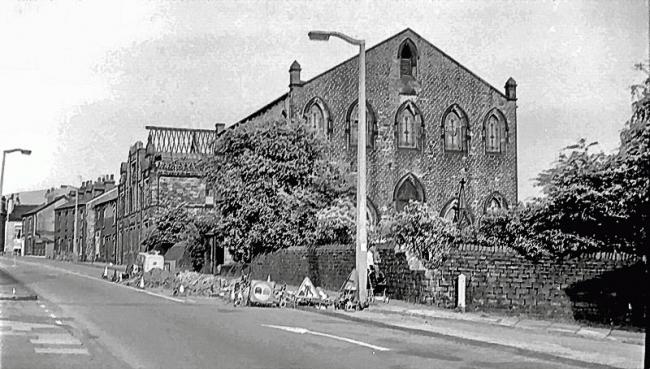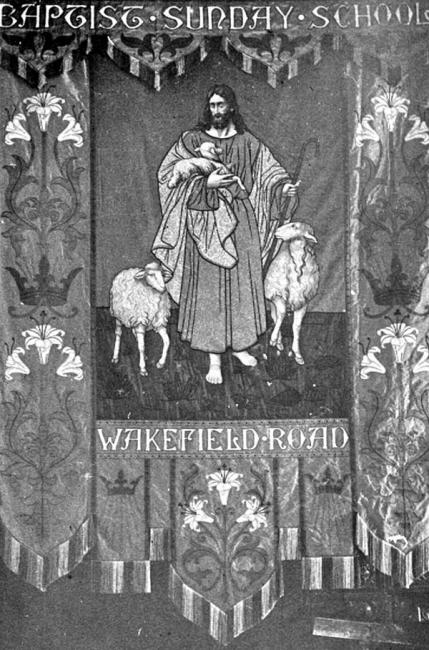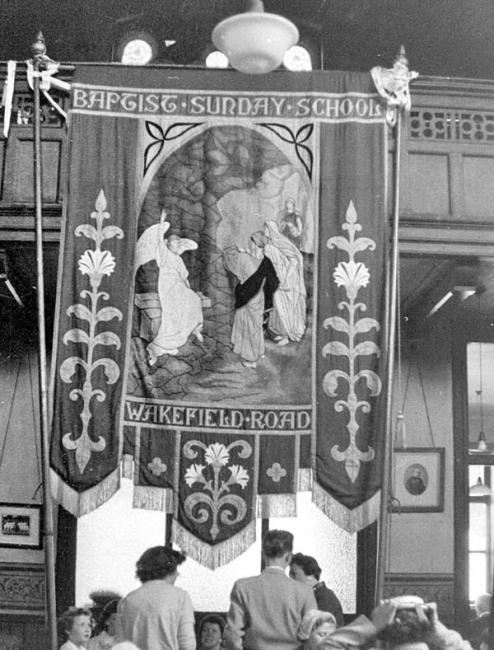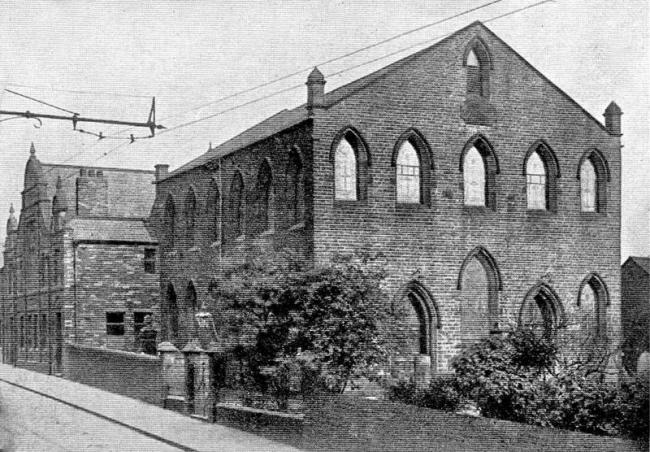Hide
Mount Olivet, Stalybridge, Baptist
hide
Hide
Hide
Wakefield Rd,
Stalybridge
Hide
The Mount Pleasant chapel opened between 1815 and 1820 probably on Cross Street. This proved to be too small so another was built in 1826, almost certainly on same site, and known as 'Bethel'. This was the one demolished for the railway in 1844.
Tthe Wakefield Road Church was founded in 1848 and closed in 1973. The foundation stone of the Wakefield Road Church was laid on 25th December, 1846, and the Church was opened on 26th March, 1848.
"There came to the town at this time a Mr. A. Barker, a Baptist preacher from Birchcliffe, Hebden Bridge, who had secured employment as a book-keeper in one of the cotton mills. He soon began to take part in the religious life of the town, and made himself known as a General Baptist. His teaching of Baptist principles excited considerable attention, and some of of his hearers were so impressed by his remarks concerning Believer's Baptism that they offered themselves as candidates for that Ordinace. These people, eight or nine, being considered suitable were baptised by him (Barker) in November 1806 in the reservoir of the Old Woollen Mill on Old Street. More baptisms followed and the membership continued to grow. The members formed themselves into a Society of General Baptists, though at that time they were not then regularly organised as a Christian Church and did not belong to the Connection of General Baptists. Two persons were, however, selected as Deacons, though they were not regularly set apart to their work. These persons were William Haseldine and Samuel Brooks.At first these members gathered for worship in a part of Mr. Barker's residence on Cocker Hill - his garret being devoted to that purpose. The rapid increase of members and congregation, however, necessitated a larger accommodation, and a room was taken on Rassbottom Brow, where the railway arches now stand. Stakes were driven into the mud floor, and planks placed thereon served for seats. Tallow candles placed on the sides of the wall were the only lights used.
A difference of opinion in theology now manifested itself. English Baptists had grown up under a two-fold banner. The successors of John Smythe favoured a liberal theology, and had become known as General Baptists; but another group has arisen, who were strongly Calvinistic, and had become organised as the Particular Baptists. It was with this latter section that some of the members found themselves in close sympathy, and seventeen of them seceded and formed themselves into a separate body. The now existing Particular Baptist Church, Cross Leech Street, was the result of the secession.
Mr. Barker continued as minister until August, 1814. The new one was the Rev. Wm. Pickering, 1815 to 1820. During his time the old meeting place was discarded and a Chapel was built, which was used as a Sunday School as well as for public worship. [This must be the 'Mount Pleasant' chapel. This could not be the Bethel chapel which was knocked down for the railway in 1844, but it may well have been on the same site]
Next came in 1821, the Rev. Robert Abbott - now known as Pastor. There was no baptistry at the Chapel. Behind the railway station was a farm-house occupied by Mr. Jonathan Gartside. Opposite this farm house the baptisms took place in the River Tame. Mr. Abbott stayed for four years (1825?). During this time membership and congregation had increased to such an extent that it was found necessary to have a larger Church building.
In 1826 the Rev. Thomas Smith entered upon his pastorate, and there was built a new Chapel in Cross Street. This little Bethel was greatly loved, and it was a sad day for her members when it had to be demolished to make way for the railway arches. Mr. Smith remained pastor for seventeen years.
In the year 1844 the Rev. John Sutcliffe began his ministry. The first four years was an anxious time for all, for when the Chapel was pulled down the dead had to be removed to the new burying ground and a new place of worship had to be erected. Until the new building was finished worshippers met in the Forester's Hall on Forester Street in the Castle Hall district of the town. Mr. Sutcliffe, after eighteen years of faithful ministry, resigned in 1862.
In 1897 the old school, which had long been too small for the increasing number of scholars, was pulled down and a new one built at a cost of £2,500.
In 1904 the Dukinfield members were allowed to separate.....to form their new church on Oxford Rd.
A new organ was installed in the Wakefield Road Church in October 1906.
"Wakefield Road Baptist Church, (Mount Olivet), Stalybridge. A Centenary Record, 1848 - 1948", by Rev. Garfield E. Howells. Minister at the Church in 1948.
The Croos Street chapel was located
This site provides historical information about churches, other places of worship and cemeteries. It has no connection with the churches etc. themselves.
- OpenStreetMap
- Google Maps
- StreetMap (Current Ordnance Survey maps)
- Bing (was Multimap)
- Old Maps Online
- National Library of Scotland (Old Ordnance Survey maps)
- Vision of Britain (Click "Historical units & statistics" for administrative areas.)
- English Jurisdictions in 1851 (Unfortunately the LDS have removed the facility to enable us to specify a starting location, you will need to search yourself on their map.)
- Magic (Geographic information) (Click + on map if it doesn't show)
- GeoHack (Links to on-line maps and location specific services.)
- OpenStreetMap
- Google Maps
- StreetMap (Current Ordnance Survey maps)
- Bing (was Multimap)
- Old Maps Online
- National Library of Scotland (Old Ordnance Survey maps)
- Vision of Britain (Click "Historical units & statistics" for administrative areas.)
- English Jurisdictions in 1851 (Unfortunately the LDS have removed the facility to enable us to specify a starting location, you will need to search yourself on their map.)
- Magic (Geographic information) (Click + on map if it doesn't show)
- GeoHack (Links to on-line maps and location specific services.)










